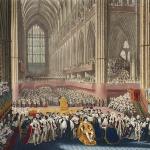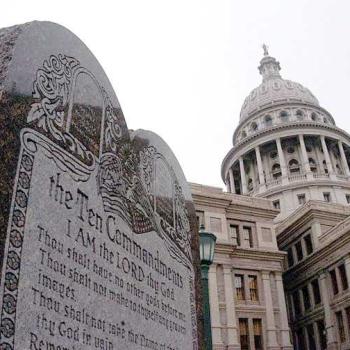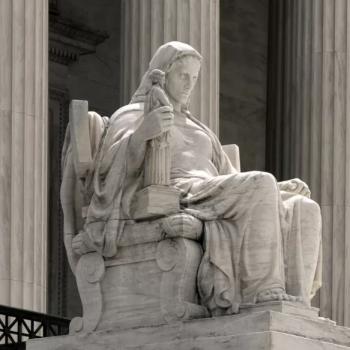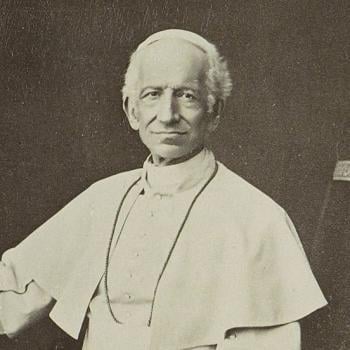Saint George is the patron saint of England, and he is famous for slaying a dragon. That much I knew. So I thought that in light of this week’s coronation of King Charles III, it would be fun to dig into the life of Saint George. But here’s the truth about Saint George: he probably existed only in legends. Even so, in spite of his likely being fictional, Saint George was canonized in the year 494 by Pope Gelasius. His feast day is April 23.
I assume this means the dragon is fiction, too. Bleep.
Even worse, George was not English. There are no claims he ever even visited England. And he is also the patron saint of Georgia and parts of Spain and several other places as well. There are statues and paintings of him all over Europe, so at some point he must have been a popular guy. But this post will focus on the version of Saint George that became part of England.
The Truth About Saint George
The official story of Saint George is that he was a Roman soldier and member of the Praetorian Guard, serving the Emperor Diocletian. He was also a Christian, and he refused an order to make a sacrifice to a pagan god. In some versions of the story he refused to take part in martyring Christians. And for this he was tortured and decapitated in the year 303. George was said to have been born in what is now Turkey, maybe. He is entombed in the crypt of a Greek Orthodox church in Israel. And none of that can be proved to be true. Well, there is a Saint George Tomb in Israel, but we can’t know who might be entombed there. There are also enough relics of Saint George scattered all over Europe that there can’t be much of him left in the tomb. Assuming that’s him.
The earliest extant text about Saint George is a 5th century Greek hagiography called the Passio Georgii. The original text of the Passio was so slipshod it was substantially revised by later hands. The original came to be called the “apocryphal” version, and the revision is the “canonical” version. But the Passio must have been inspiring enough to enable George’s canonization.
As time went on Saint George became the ideal of chivalry, referring to the gallantry and honor of the knights of feudal Europe. In art he is nearly always dressed as a knight of about the 11th century. Saint George was especially embraced by Crusaders. He was said to have appeared at the Battle of Antioch in 1098. The story of Saint George and the Dragon may have originated with Crusaders also. It’s possible the story was inspired by Ovid’s story from Metamorphoses of Perseus rescuing Andromeda from a sea monster.
Saint George and the Dragon
The classic version of the story is from Jacob de Voragine’s Legenda aurea (1265–1266). The dragon was terrorizing a community in Libya. The beast could kill people just by breathing on them. To keep it appeased, the townspeople were giving it two sheep every day. When they ran out of sheep, they began to give it people. The king made a law that every day children or young people were chosen by lot to feed the dragon. However, the day came in which the king’s daughter was chosen by the lot, and then he began to rethink his policy.
The king offered his people a great deal of money if they would choose someone else to take the place of his daughter. But the people were not having it. “Your daughter shall be given, or else we shall burn you and your house,” they said. Eventually the king dressed his daughter as a bride and took her to meet her fate with the dragon.
And lo! Our hero Saint George happened to pass by to find the weeping, desolate princess. After hearing her story, Saint George promised to rescue her. And then came the dragon! Saint George charged on his horse, and he struck the dragon with his spear and threw him to the ground. Then he borrowed the princess’s girdle (which was not an undergarment but more like a belt worn loosely around a dress) and threw it around the dragon’s neck. And Saint George and the princess returned to the town, leading the dragon.
When the people saw the dragon they were terrified, but George reassured them. And after they had all converted to Christianity and had been baptized, George cut off the dragon’s head.
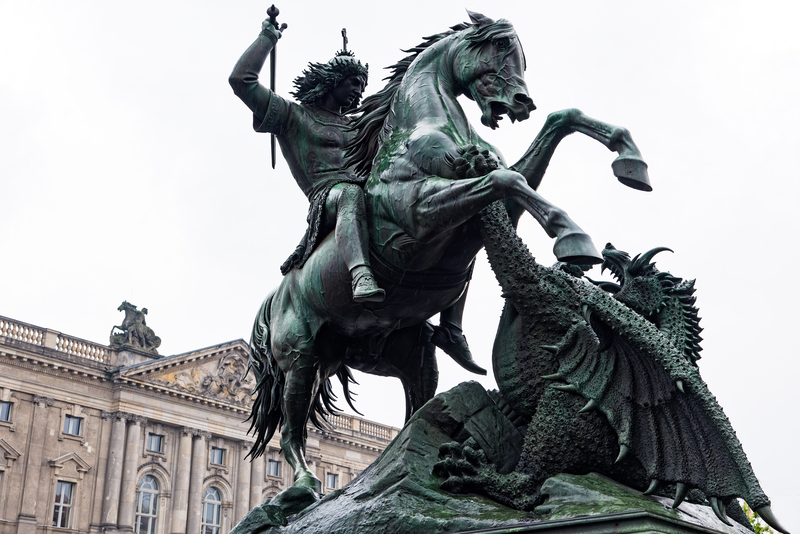
The Further Adventures of Saint George
The special connection between Saint George and England dates to the Crusades, and to King Richard I (1157-1199), famously called Richard the Lionheart. Richard’s leadership during the Third Crusade made him something of a legend himself. Part of that legend is that Richard I placed himself and his army under the protection of Saint George. It’s also said that Richard I adopted Saint George’s Cross, a red cross on a white background, as his standard. Since Richard I’s time, Saint George has been the special protector of English soldiers. King Henry V invoked Saint George at the Battle of Agincourt. Exhausted British troops in World War I sometimes saw beautiful visions of Saint George in the sky over No Man’s Land.
It was King Edward III (1312-1377) who made Saint George the Patron Saint of England. Edward III established the Order of the Garter, an order of knights, in 1348. The Order of the Garter was inspired in part by another legend, King Arthur, but the Order is dedicated to Saint George. Saint George’s Cross is incorporated into the badge of the Order of the Garter and eventually became the flag of England. Today, of course, Saint George’s Cross is combined with Saint Andrew’s Cross on the Union Jack.

And can there be anything more English than the “Once more into the breach” speech from Shakespeare’s Henry V? It ends this way —
And you, good yeoman,Whose limbs were made in England, show us hereThe mettle of your pasture; let us swearThat you are worth your breeding; which I doubt not;For there is none of you so mean and base,That hath not noble lustre in your eyes.I see you stand like greyhounds in the slips,Straining upon the start. The game’s afoot:Follow your spirit, and upon this chargeCry ‘God for Harry, England, and Saint George!’


